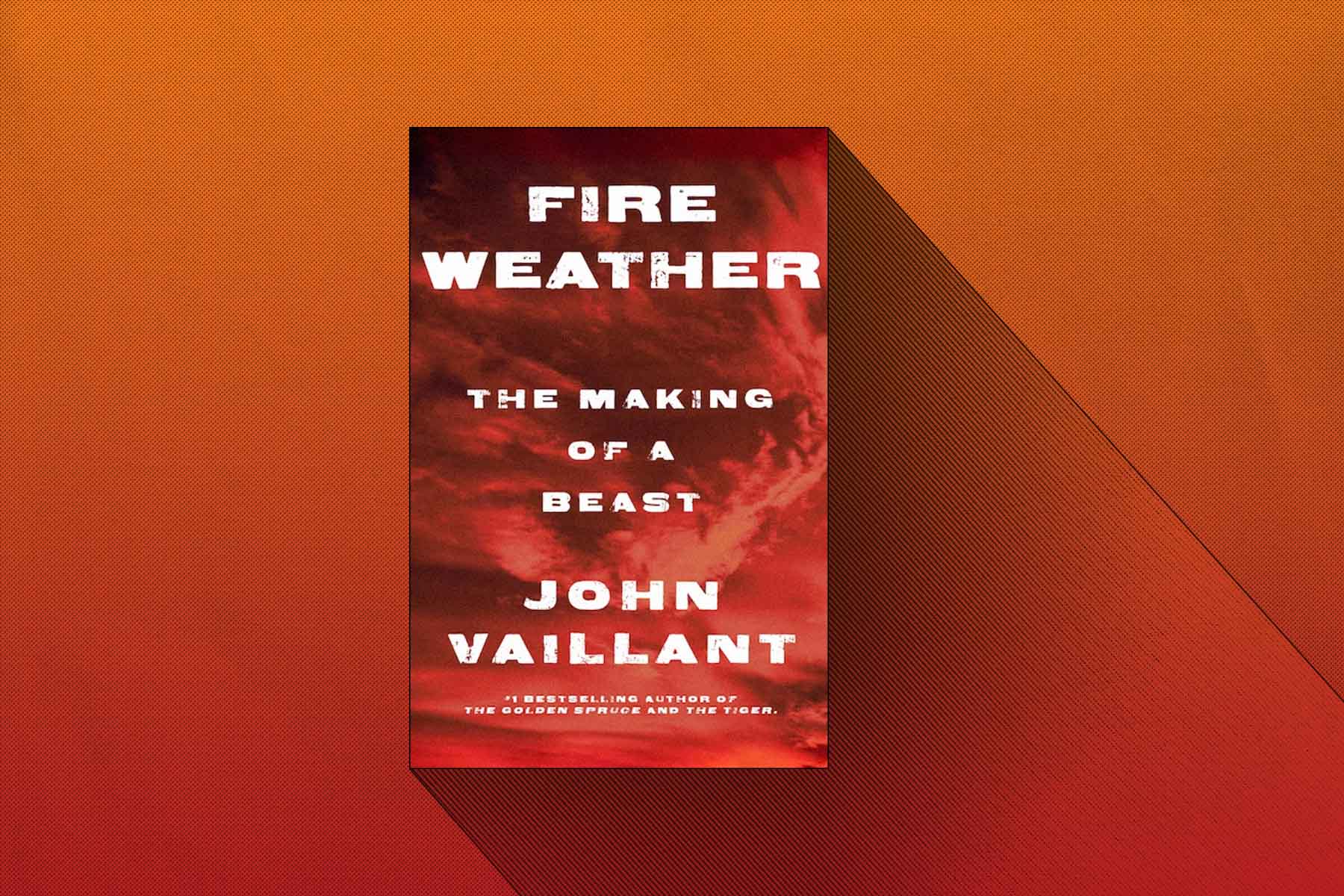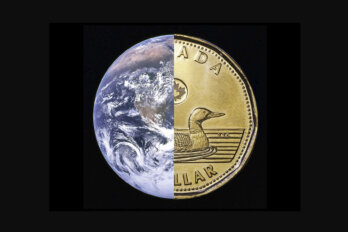All forest fires have origin stories. Some start with a cigarette tossed from a vehicle or a campfire left untended, others with a lightning bolt striking a tree. But as John Vaillant argues in his new book, Fire Weather: The Making of a Beast, even the ones that can’t be traced back to human error, or arson, have our fingerprints all over the crime scene. While we don’t throw the match, we build the tinder, pump the oxygen, and set up the ingredients for a world primed to burn.
On the morning of May 3, 2016, the residents of Fort McMurray, a northern Alberta town known for the mass extraction of oil, experienced the apocalyptic outcome of every forest fire. What became colloquially known as “The Beast” burned across 579,767 hectares of land, incinerated thousands of homes, forced the evacuation of nearly 90,000 people, and became the costliest disaster in Canadian history at nearly $10 billion. Vaillant has always had an eye for the gargantuan. In 2005’s The Golden Spruce, it was big trees and big West Coast forest; in 2010’s The Tiger, it was big cats and big Siberian taiga. In Fire Weather, it is big machines, big industry, and big fire. Perhaps biggest of all is the hubris of Alberta’s oil industry: a fusion of ambition and greed that drives investors to spend “half a trillion dollars to date” on “the largest, most expensive, most energy-intensive hydrocarbon recovery project on Earth.”
By tracing the emergence of, and response to, the Beast, Vaillant offers a masterclass in environmental writing. The story of this one disaster is interwoven with Alberta’s petrochemical history, the story of our foundational relationship to fire, the story of climate change awareness, and, in a way, the oil-stained development of human history. Over the past two decades, Vaillant has become one of our most eloquent and important translators of complex ecological—and existential—issues into narrative non-fiction. But making the ancient forests of Haida Gwaii or the snowy taiga of Siberia come alive is one thing. It takes a particularly gifted writer to make bituminous sand complex, scenic, and narratively magnetic.
While his previous two non-fiction books followed their central characters and their motivations—a timber worker with a grudge trying to make a political point by cutting down a near-unique tree, a Russian tracker stalking a man-eating tiger—Fire Weather contains no singular character to construct a story around. Instead, Vaillant allows a sub cast to take the stage: the expansive boreal forest, the unlikely city of Fort McMurray as Canada’s most infamous petroleum boomtown, the various residents overwhelmed by this elemental event, and, above all, fire itself. Vaillant turns that fire—the initial warning smoke, the immediate black-red blaze, and the smoldering, sooty aftermath—from an abstraction into the book’s principal character, complete with narrative arc, change, conflict, and resolution.
Using fire to burn fossil fuels is heating the planet and causing unpredictable environmental consequences. The debate, such as it was, over anthropogenic climate change is now settled. The only unsettled part is how to convince the planet to actually do something about it. Many writers have taken up the task—some with carrots and others, increasingly, with sticks: David Wallace-Wells with 2019’s The Uninhabitable Earth, Elizabeth Kolbert with 2021’s Under a White Sky, Nathaniel Rich with 2019’s Losing Earth. Vaillant cuts straight to the shock and awe with what he calls a “flammable world.” No mincing words, because no time.
In a recent essay in the Guardian about the climate crisis, Rebecca Solnit wrote that “every crisis is in part a crisis of storytelling.” While climate change denialism has largely dissipated, lingering only in the dark fringes of social media, she laments the way we talk about climate change: “we still lack stories that give context.” While increasingly darker headlines flash by, and new Intergovernmental Panel on Climate Change reports emerge near annually to sober even the most hopeful among us, Fire Weather ’s strength lies in its wider context. Intimate and global, harrowing and touching, terrifying and yet surprisingly inspirational, the book fills a hole in the best climate reportage to date. It may prove to do more than any book that came before by evoking horror on every page: horror at the world that we’ve tarnished, horror at the greed that we’ve let rule.
And this is where we come in. The book lays bare the sheer impracticality and foolishness of extracting oil from Alberta’s bituminous sands. For example: in 2017, approximately a third—a third!—of all natural gas produced by Canada was used to separate bitumen from bituminous sand; i.e., hydrocarbons were used to produce more hydrocarbons. According to Vaillant, four conditions have to be met for Alberta’s bitumen industry to be profitable: “conventional oil must be trading above $50 a barrel; the natural resources needed to produce it (fresh water, natural gas, and the boreal forest ecosystem) must be had for next to nothing; the industry itself must be heavily subsidized; and exploration costs must be nil.” (He includes a footnote that Saudi Arabia, by comparison, can break even at just $5 a barrel.) Here’s where the hunt for big oil starts to feel much like the hunt for big elephant or big whale—something built on ego more than anything else.
In the first half of the twentieth century, when the then burgeoning Alberta oil industry tried to entice American investors, they called the province’s oil reserves the “Magic Sand-Pile.” Alberta oil companies still sound like this. As Vaillant writes: “In language that sounds like a special offer from Starbucks, one oil industry data site describes ‘this typical light sweet synthetic crude [as] a bottomless blend of hydrotreated naphtha, distillate, and gasoil fractions.’” It’s hard not to feel like we’ve been sold a bill of goods: that we need to burn fossil fuels in order to live, that we have to swallow any consequence, as ruinous as it may be, in order to keep going.
And where there’s oil, there’s fire. We’ve long believed ourselves to be masters of fire—in how we create it and harness it and deploy it. But that’s another story we sell to ourselves. As the Beast showed, the ingredients in a forest fire aren’t just fuel, wind, and heat but also our own rampant growth. As Vaillant writes, “corporations and wildfires follow similar growth patterns in that, once they reach a certain size, they are able to dictate their own terms across a landscape—even if it destroys the very ecosystem that enabled them to grow so powerful in the first place.” The same could be said of humans. We are more like fire—unruly, insatiable, rapacious—than we want to believe or care to admit.
Throughout Fire Weather, there’s a parallel to the wider world at work: as we all walk through our lives knowing what we know—that we are on track for massive global change if we don’t adjust course—we keep plodding along out of uncertainty or fear or greed. But soon, many of us will be like the residents of Fort McMurray on that morning in May 2016, or like many people in Alberta today looking up at orange skies and once again hearing the word “unprecedented.” We’ve all been watching the smoke in the distance. You know what comes next.





